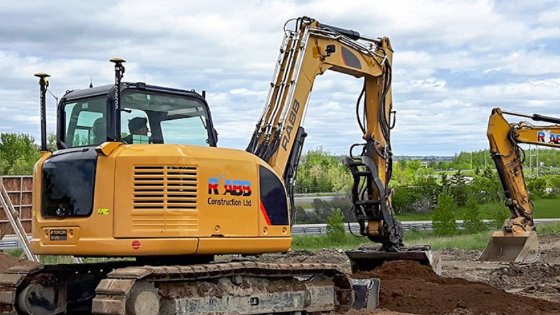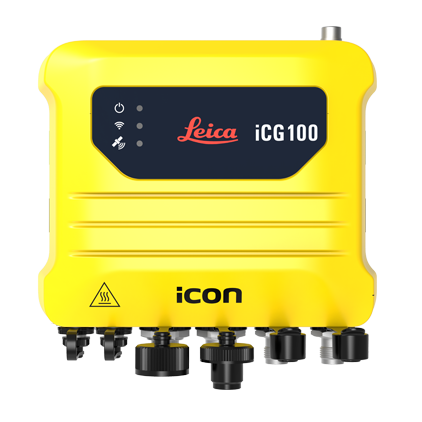The Only Guide to Sheroz Earthworks
The Only Guide to Sheroz Earthworks
Blog Article
See This Report on Sheroz Earthworks
Table of ContentsSheroz Earthworks Can Be Fun For EveryoneThe Best Strategy To Use For Sheroz EarthworksUnknown Facts About Sheroz EarthworksGetting My Sheroz Earthworks To WorkSheroz Earthworks Can Be Fun For Everyone
As a service provider, you understand the problem of counting on eyesight to level your earthmoving project. For you to develop a solid foundation, the ground beneath it needs to be properly compacted and leveled. From the seat of a dozer or motor grader, it's not easy to inform if the site is at the proper grade.Maker control systems are an amazing development for the building sector. Basically, it suggests that the equipments made use of in construction are more precisely regulated to function successfully in their environment.
The secret to maker control systems comes down to GPS and GNSS. The short version is that GPS and GNSS signals are received by the (or antennas) on the tractor and supply placement and elevation references on the task site.
A rotating laser transmitter was placed above the machines on a high tripod. The makers would certainly have laser receivers affixed to the top of a mast referencing the reducing side of the blade.
The 4-Minute Rule for Sheroz Earthworks
That system could just do so a lot. Since the laser was an 'altitude just' reference it might only readjust up or down based upon where the laser was. The laser system has no ability to know the setting or where it is on the work site. The contractor would additionally require to relocate the laser transmitter each time he passed the 1500' range of range.
This procedure mainly includes mapping and customizing from several satellites to the receivers on the jobsite. Because machine control normally relies upon GPS, it begins with satellites in the external environment - trimble repair parts. These satellites triangulate with each other to produce a digital map of the building website. They after that send out a signal down to the site itself.
Base terminals receive and correct the general practitioner signal. This modification is necessary since the satellite signal isn't exact enough for accuracy earthwork. General practitioner is fine for locating points widespread. Yet in this context, the devices require to obtain outcomes to the millimeter scale. From thousands of miles overhanging, the satellites can not determine with that said degree of precision.
8 Easy Facts About Sheroz Earthworks Explained
Then, the satellites can finish up with a margin of error of as high as 30 feet. For leveling ground on a building website, 30 feet is a significant amount. That's why the base station is required - https://medium.com/@floydoverbeck4500/about. It's maintained a particular, set factor on the site, often affixed to the top of a post inserted into the ground.
When it obtains the general practitioner signal, it compares both locations the area the satellites assume it is versus where it recognizes it actually is. It adjusts for the distinction. By lining the 2 up, it changes all the information from the satellites over to the appropriate position. As soon as the base station has actually modified the GPS signal, it sends the signal bent on all active vagabonds, normally in the type of radio waves.
2 types of rovers are normally made use of man vagabonds and machines. Both types have a receiver to grab the GPS signal and an antenna to get the RTK. Keeping that info, they create a digital 3D map of the website, where they can determine specifically where on the website they're positioned.

3 Easy Facts About Sheroz Earthworks Explained
Such terminals are owned by exclusive entities or the government, which might call for special authorization and perhaps a cost for contractors to use them. The advantage of these systems, however, is that they don't call for a regional base station. And because they make use of cellular modems as opposed to radio waves, the signal can be relayed much further without decreasing in top quality.
As the vagabond steps, the IMUs can figure out specifically how they're moving. They then view website collaborate with the area being offered by the RTK to establish exactly where the blade of the maker is at any kind of given moment.
These parts commonly take the form of technical gadgets, which send signals backward and forward to one another to work the magic of device control. In the midst of the procedure explanation, however, it can be easy for details terms to obtain lost or blended. For the purpose of clarity and simplicity, here's an overview of each of the individual components included in the majority of device control systems.
Everything about Sheroz Earthworks

Base station: Base stations typically take the type of little boxes positioned atop poles in the ground. They receive the General practitioner signal from the satellites and contrast it with their accurate place, changing it accordingly to create the RTK.
Report this page